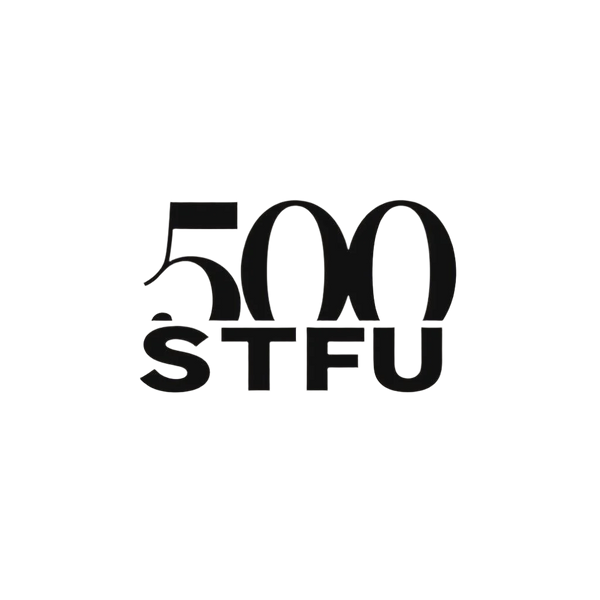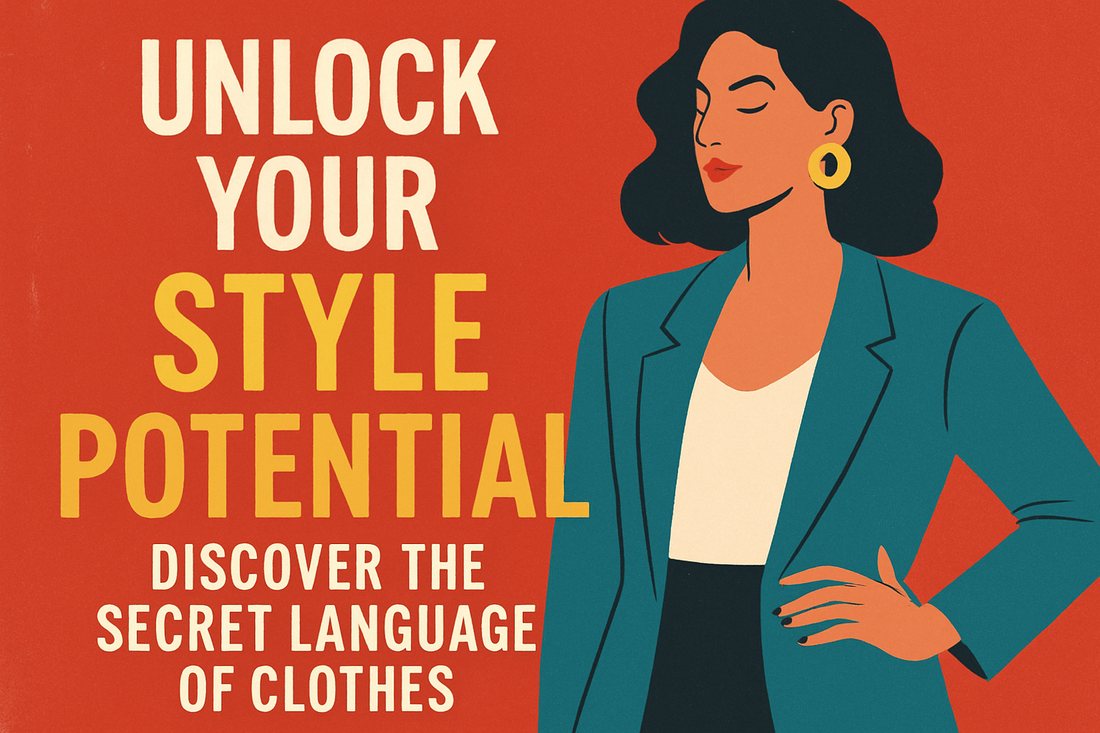Understanding the Secret Language of Clothes
In the intricate tapestry of human interaction, clothes serve as silent narrators of our stories. They whisper secrets about who we are, what we value, and how we perceive ourselves in the grand theater of life. Garments aren't merely threads woven together—they're powerful communicators in a visual dialect that transcends verbal boundaries.
The Role of Fashion in Daily Life
Fashion permeates our existence in ways both conspicuous and subtle. From the moment we open our wardrobes each morning, we engage in a ritual of self-expression that extends far beyond mere utility. The pieces we select—whether a tailored blazer for a crucial meeting or relaxed linen pants for a weekend excursion—become extensions of our intentions for the day ahead.
This sartorial decision-making process influences not only how others perceive us but also how we navigate our environments. A well-chosen ensemble can transform into psychological armor, bolstering confidence during challenging situations. Conversely, ill-fitting or inappropriate attire might cultivate discomfort that manifests in our demeanor and interactions.
Our relationship with clothes evolves throughout life's chapters. What begins as functional necessity blossoms into a nuanced system of self-representation. The quintessence of mature style lies not in following ephemeral trends but in developing an authentic visual vocabulary that resonates with your inner self.
For those seeking the perfect balance between comfort and style for casual yet polished moments, our linen vacation pants offer an exemplary solution. These versatile pieces embody the intersection of functionality and aesthetic appeal that defines thoughtful wardrobe curation.
The lightweight, breathable fabric makes these pants ideal for various settings, from casual outings to relaxed professional environments where you want to maintain comfort without sacrificing style. They represent the thoughtful approach to fashion that this article advocates—pieces that work harmoniously with your lifestyle while communicating intentional style choices.
Communicating Identity Through Clothing
Our garments function as nonverbal declarations of identity, subtly broadcasting information about our socioeconomic status, cultural affiliations, personal values, and even our emotional landscape. This unspoken language operates constantly, sometimes communicating messages we ourselves may not consciously recognize.
When you enter a room, your attire initiates conversations before words are exchanged. Research suggests that observers form initial impressions within seven seconds of an encounter, with clothing serving as a primary information source. These split-second assessments can influence everything from job opportunities to social connections.
Consider the multifaceted messaging conveyed by a vintage band t-shirt. It might simultaneously signal musical preferences, generational identity, sustainability values, and a touch of nostalgic sentimentality—all before a single word is uttered.
"Fashion is the armor to survive the reality of everyday life."
— Bill Cunningham
The chromatic spectrum of your wardrobe speaks volumes about your disposition and intentions. Vibrant hues like crimson and cobalt often project confidence and dynamism, while muted tones like sage or taupe suggest sophistication and understated elegance. The silhouettes you favor—whether structured and angular or flowing and organic—similarly telegraph aspects of your personality.
The synergy between color psychology and design elements creates a complex visual shorthand that others instinctively interpret. A monochromatic ensemble in charcoal might convey authority in professional settings, while eclectic pattern mixing suggests creative versatility and nonconformist thinking.
Decoding Clothing Choices
The garments we gravitate toward emerge from a fascinating interplay of psychological impulses, cultural programming, and personal history. Understanding these influences can transform passive consumption into intentional self-expression.
The Psychology Behind Fashion Choices
Our sartorial selections often reflect deeper psychological needs and states. During periods of uncertainty, many people instinctively retreat to familiar comfort pieces—the phenomenon fashion psychologists term "security dressing." Conversely, moments of personal triumph might inspire bolder, more experimental choices that mirror internal confidence.
The concept of enclothed cognition—how our clothes influence our psychological processes—reveals that attire affects not just how others perceive us but how we perceive ourselves. Studies demonstrate that wearing specific garments can measurably impact performance, with participants showing enhanced focus when wearing clothes they associate with attentiveness or intelligence.
Exploring Cultural Influences on Wardrobe Decisions
Cultural frameworks profoundly shape our clothing preferences, often in ways invisible to us until we encounter contrasting traditions. These influences operate both overtly through formalized dress codes and subtly through unspoken community standards.
Western fashion traditions have historically emphasized individual expression and distinction, with trends cycling rapidly and novelty highly valued. This contrasts with many Eastern fashion philosophies, which often prioritize harmony, continuity, and collective identity. While Western fashion might celebrate the avant-garde statement piece, Eastern traditions might revere the perfection of timeless craft techniques.
The globalization of style has created fascinating hybrid aesthetics that borrow from multiple cultural traditions. Contemporary Japanese streetwear, for instance, masterfully blends traditional elements with Western influences, creating entirely new visual languages.
Cultural symbols embedded in clothing—from tartan patterns to specific embroidery motifs—carry rich histories that inform their present meanings. These visual elements can signify heritage, resistance, solidarity, or aspiration, depending on context and presentation.
Understanding these complex symbolic systems enriches our appreciation of fashion as a cultural artifact and allows for more nuanced personal expression through informed choices.
| Garment Element | Cultural Origin | Contemporary Significance |
|---|---|---|
| Paisley Pattern | Persian/Indian | Bohemian aesthetic, psychedelic associations |
| Breton Stripe | French naval uniform | Timeless sophistication, artistic heritage |
| Indigo Dyeing | West African/Japanese | Craftsmanship, sustainability values |
Building a Wardrobe That Speaks Your Language
Creating a collection of garments that authentically represents your identity requires intentionality and self-awareness. The most compelling wardrobes balance practicality with personal expression, resulting in versatile selections that facilitate rather than constrain daily life.
Essential Pieces for Every Closet
While fashion pundits frequently tout lists of "must-have" items, the truly essential wardrobe foundation varies significantly based on lifestyle, geographic location, and personal preferences. Nevertheless, certain versatile pieces tend to offer exceptional utility across diverse contexts:
- A well-tailored jacket that frames your silhouette advantageously
- Comfortable, quality denim in a silhouette that flatters your proportions
- Layering pieces in neutral tones that facilitate outfit building
- Footwear that balances comfort with appropriate styling for primary activities
- Adaptable accessories that elevate simple ensembles
The most sustainable and satisfying approach to wardrobe building generally involves investing in high-quality foundation pieces with enduring appeal while selectively incorporating trend elements that genuinely resonate with your aesthetic sensibilities. This balanced methodology prevents the accumulation of disposable fast fashion while still allowing for playful experimentation.
Consider allocating approximately 70% of your wardrobe budget to timeless pieces crafted from superior materials, reserving the remaining 30% for seasonal refreshes and experimental items that inject vitality into your style vocabulary.
Mixing and Matching: Creating Unique Outfits
The artistry of personal style emerges not merely from collecting individual garments but from the inventive combinations you create with them. Developing proficiency in mixing separates unlocks exponentially more outfit possibilities from a relatively modest collection of pieces.
Textural variety introduces sophistication to ensembles that might otherwise appear flat or uninspired. Juxtaposing contrasting textures—pairing sleek leather with supple cashmere, or structured denim with diaphanous silk—creates visual interest and depth that elevates even simple color palettes.
Becoming attuned to fabrication also enhances your ability to select garments appropriate for specific climates and occasions. The haptic qualities of clothing significantly impact both comfort and presentation, making textile knowledge a crucial component of style fluency.
Expressing Individuality Through Clothes
Finding Confidence in Your Style
Authentic style confidence emerges not from blindly following trends but from cultivating self-awareness about what genuinely resonates with your identity and lifestyle. This confidence manifests as a certain nonchalance—the ability to wear clothes rather than being worn by them.
Developing this assurance often requires experimentation and occasional missteps. Each "fashion failure" provides valuable data about your preferences and can ultimately strengthen your stylistic conviction. Remember that the most compelling dressers throughout history have usually broken conventional rules rather than rigidly adhering to them.
The Power of Personal Style Statements
Certain signature elements can become powerful visual shorthand for your personal brand. These might include a characteristic color palette, recurring silhouettes, or distinctive accessory choices that become inextricably associated with your presence.
Accessories function as punctuation marks in the language of clothes—they emphasize, modify, and sometimes completely transform the meaning of an outfit. A statement necklace might turn a simple black dress from understated to commanding, while thoughtfully selected eyewear can frame your face in ways that dramatically alter perception.
For maximum versatility, consider investing in quality accessories that can adapt across multiple contexts. A well-crafted leather bag, for instance, might appropriately accompany you from professional settings to evening engagements, evolving in its styling to suit each scenario.
The Future of Fashion: Trends to Watch
Emerging Trends and Innovations
The fashion landscape continually evolves, with contemporary developments suggesting several compelling directions. Genderfluid styling continues to gain momentum, challenging traditional binary categories in favor of more nuanced self-expression. Simultaneously, we're witnessing renewed appreciation for artisanal craftsmanship as a counterpoint to mass production.
The concept of seasonless dressing—selecting versatile pieces that transition gracefully between climatic conditions—reflects both sustainability concerns and the increasingly globalized nature of contemporary lifestyles. This approach favors adaptable layers and multifunctional designs over strictly seasonal collections.
The Role of Technology in Fashion
Technological innovation transforms not only how garments are produced but also how we interact with them. Virtual fitting rooms employ augmented reality to revolutionize online shopping experiences, while advancements in fabric science create materials with unprecedented performance characteristics.
Digital fashion—entirely virtual garments designed for online avatars and social media personas—represents an emerging frontier that challenges fundamental assumptions about clothing's physicality. These developments suggest fashion's evolution into increasingly conceptual territory.
Perhaps the most significant shift in contemporary fashion involves heightened awareness of environmental and ethical implications. Circular design principles, which prioritize longevity, biodegradability, and recyclability, increasingly influence both established houses and emerging designers.
- Regenerative agriculture practices for natural fibers
- Innovative recycling technologies for synthetic materials
- Transparency in supply chain management
- Fair labor practices and artisan partnerships
- Water conservation and chemical reduction initiatives
Forward-thinking consumers increasingly view these considerations not as optional extras but as essential components of style literacy in the twenty-first century.
Frequently Asked Questions
How Can I Discover My Personal Style?
Uncovering your authentic style involves both introspection and experimentation. Begin by analyzing garments you consistently feel confident wearing, noting common elements like silhouettes, colors, or textures. Create visual collections of styles that resonate with you, whether through digital platforms like Pinterest or traditional mood boards.
Consider your lifestyle requirements, body proportions, and the image you wish to project professionally and socially. Experiment methodically with different aesthetics, soliciting feedback from trusted sources while ultimately prioritizing your personal comfort and satisfaction.
What Do Different Colors Represent in Clothing?
Color psychology in fashion operates both universally and within specific cultural contexts. Certain chromatic associations transcend boundaries—red frequently connotes passion or power, while blue suggests trustworthiness and stability. However, cultural variations significantly impact interpretations; white symbolizes purity in Western traditions but mourning in many Eastern contexts.
Personal associations also influence how colors affect both wearers and observers. The shade that energizes one individual might overwhelm another, making personalized color analysis more valuable than prescriptive rules.
How Can I Use Clothes to Reflect My Personality?
Authentic style expression begins with identifying core aspects of your personality and finding their visual counterparts. An analytical thinker might gravitate toward structured garments with architectural details, while someone with an exuberant disposition might incorporate playful patterns or unexpected color combinations.
Consider how different elements might telegraph specific traits: meticulous attention to detail might show through precisely selected accessories, while creative adaptability could manifest in versatile pieces styled in unconventional ways. Remember that genuine style expresses rather than masks your authentic self—the most compelling fashion choices feel natural rather than performative.

